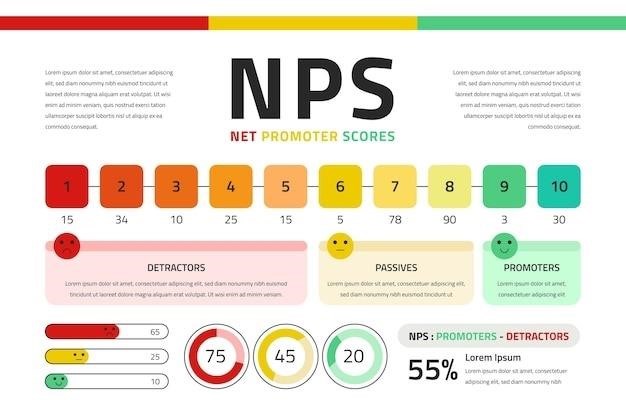
NFPA 268⁚ A Comprehensive Overview
NFPA 268, Standard Test Method for Determining Ignitability of Exterior Wall Assemblies Using a Radiant Heat Energy Source, is a critical standard in the field of fire safety. It provides a standardized method for evaluating the susceptibility of exterior wall assemblies to fire in the presence of a pilot ignition source. This standard is widely used by testing laboratories, manufacturers, and building code officials to ensure the safety of buildings and structures.
Introduction to NFPA 268
NFPA 268, formally known as “Standard Test Method for Determining Ignitability of Exterior Wall Assemblies Using a Radiant Heat Energy Source,” is a cornerstone standard in fire safety. It provides a standardized method for assessing the ignitability of exterior wall assemblies when exposed to a controlled heat source, simulating a potential fire scenario. This standard is crucial for determining the fire performance of building materials and ensuring the safety of structures. NFPA 268 is a comprehensive document outlining the methodology, equipment, and procedures for conducting these critical fire tests. It is widely recognized and adopted by building code officials, testing laboratories, and manufacturers involved in the construction industry. The standard’s emphasis on standardized testing ensures consistency and reliability in evaluating the fire performance of various building materials and assemblies.
Understanding the Purpose and Scope of NFPA 268
NFPA 268 serves a vital purpose in the realm of fire safety by providing a standardized method for evaluating the ignitability of exterior wall assemblies. The standard’s scope encompasses the testing procedures and criteria used to determine the susceptibility of these assemblies to fire when exposed to a controlled radiant heat source, simulating a potential fire scenario. This standard is crucial for evaluating the fire performance of building materials and ensuring the safety of structures. The scope of NFPA 268 extends beyond just the testing methodology, encompassing the selection of test specimens, preparation of the test assembly, and the instrumentation used to measure various fire-related parameters. It also outlines the criteria for interpreting the test results and classifying the ignitability of the exterior wall assembly.
Key Features and Applications of NFPA 268
NFPA 268 is characterized by its standardized methodology, which involves exposing a test specimen of the exterior wall assembly to a controlled radiant heat flux. This heat flux is calibrated to simulate a specific fire separation distance, as defined in the International Building Code. The standard employs various instruments to measure the time taken for ignition, the duration of sustained flaming, and the rate of heat release from the specimen. These measurements provide valuable data for assessing the ignitability and fire performance of the exterior wall assembly. The applications of NFPA 268 extend to a wide range of contexts. It is essential for manufacturers of building materials to ensure their products meet the required fire safety standards. Testing laboratories utilize NFPA 268 to evaluate the ignitability of exterior wall assemblies and provide independent assessments. Building code officials rely on this standard to enforce regulations and ensure the safety of structures.
The Importance of Standardized Testing in Fire Safety
Standardized testing, as outlined in NFPA 268, plays a pivotal role in ensuring fire safety by providing a consistent and reliable framework for evaluating building materials and assemblies. This standardization eliminates inconsistencies and biases that may arise from subjective assessments or uncoordinated testing procedures. By establishing a common set of test methods, NFPA 268 enables manufacturers to compare their products objectively, allowing them to innovate and improve their fire performance. Building code officials can confidently rely on these standardized test results to enforce regulations and ensure the safety of structures. The standardized approach contributes to a more robust and predictable fire safety environment, minimizing the risk of fire spread and protecting lives and property. Furthermore, these standards foster a culture of continuous improvement in the fire safety industry, driving the development of more effective materials and building practices.
NFPA 268⁚ A Guide for Testing Laboratories and Manufacturers
NFPA 268 serves as an essential guide for testing laboratories and manufacturers involved in the evaluation of exterior wall assemblies. It provides a comprehensive framework for conducting standardized fire performance testing, ensuring consistency and reliability in results. Laboratories rely on NFPA 268 for detailed specifications on test apparatus, procedures, and data analysis, enabling them to accurately assess the ignitability of building materials. Manufacturers, in turn, utilize NFPA 268 to understand the requirements for achieving fire-resistant performance in their products. By adhering to the guidelines outlined in NFPA 268, manufacturers can demonstrate the fire safety performance of their products, build trust with consumers, and meet regulatory requirements. This collaboration between testing laboratories and manufacturers, facilitated by NFPA 268, strengthens the overall fire safety of buildings and structures.
The Role of NFPA 268 in Building Codes and Regulations
NFPA 268 plays a pivotal role in shaping building codes and regulations by providing a standardized framework for evaluating the fire performance of exterior wall assemblies. Building code officials rely on NFPA 268 to determine the fire resistance requirements for different types of construction. By incorporating the test methods and criteria outlined in NFPA 268, building codes ensure that exterior walls meet acceptable levels of fire safety. This approach helps to minimize the risk of fire spread, protect lives, and safeguard property. Furthermore, NFPA 268 informs the development of fire safety regulations, ensuring that building materials and construction practices meet established standards. The consistent application of NFPA 268 in building codes and regulations contributes to a safer built environment for all.
The Future of NFPA 268 and Its Impact on Fire Safety
The future of NFPA 268 is closely tied to the evolving landscape of building materials, construction techniques, and fire safety technologies. As new materials and innovative building designs emerge, NFPA 268 will need to adapt to ensure its continued relevance and effectiveness. The standard is likely to evolve to incorporate advancements in fire testing methodologies and incorporate the latest scientific understanding of fire behavior. Moreover, NFPA 268 will need to address emerging challenges, such as the increased use of lightweight and composite materials, the integration of renewable energy sources, and the growing threat of extreme weather events. By staying at the forefront of fire safety research and innovation, NFPA 268 will continue to play a critical role in promoting building safety and mitigating fire risks in the years to come.

Accessing NFPA 268
NFPA 268 is readily accessible through various channels, making it a valuable resource for fire safety professionals, manufacturers, and anyone interested in understanding exterior wall assembly fire performance.
Downloading NFPA 268⁚ Free and Paid Options
Obtaining a copy of NFPA 268, Standard Test Method for Determining Ignitability of Exterior Wall Assemblies Using a Radiant Heat Energy Source, can be done through both free and paid avenues. The National Fire Protection Association (NFPA) makes its codes and standards available online to the public for free, as part of its commitment to enhancing public safety. This means that individuals can access the latest edition of NFPA 268, as well as previous editions, directly from the NFPA website. This option is ideal for individuals who require access to the standard for informational purposes or for educational use.
However, for individuals or organizations that require a physical copy of the standard or need to use the standard for official purposes, such as testing or code enforcement, purchasing a copy from the NFPA or authorized retailers is necessary. The purchased version typically includes the full text of the standard, along with any updates or amendments that have been issued since the last edition. Additionally, purchasing a copy ensures that users are accessing the most current and accurate version of the standard.
Online Resources for NFPA 268 Information
Beyond the NFPA website itself, there are numerous online resources available to provide information and insights related to NFPA 268. These resources can be invaluable for fire safety professionals, researchers, and anyone seeking a comprehensive understanding of this important standard. Some of these online resources include specialized fire safety websites, academic databases, and industry publications. These resources often provide summaries of the standard, articles discussing its application, and case studies demonstrating its use in real-world scenarios.
Additionally, online forums and discussion groups dedicated to fire safety and building codes can be excellent platforms for exchanging information and seeking clarification on specific aspects of NFPA 268. These platforms often feature experts in the field who can provide valuable insights and answer questions related to the standard’s implementation and interpretation. By leveraging these online resources, individuals can deepen their understanding of NFPA 268 and stay up-to-date on the latest developments and best practices in fire safety.
NFPA 268⁚ A Valuable Resource for Fire Safety Professionals
NFPA 268 serves as a vital tool for fire safety professionals, providing them with a standardized framework for evaluating the ignitability of exterior wall assemblies. By utilizing this standard, professionals can ensure the safety of buildings and structures, contributing to the overall fire safety of communities. The standard empowers fire safety professionals to make informed decisions regarding the selection of building materials, the design of fire-resistant structures, and the implementation of effective fire prevention measures. This knowledge is crucial for mitigating fire risks and protecting lives and property.
Moreover, NFPA 268 facilitates communication and collaboration among fire safety professionals, manufacturers, and building code officials. By providing a common language and understanding, this standard promotes consistency in testing procedures, interpretation of results, and the enforcement of fire safety regulations. This shared understanding helps to ensure that fire safety measures are effectively implemented across different jurisdictions and industries, contributing to a safer built environment.



